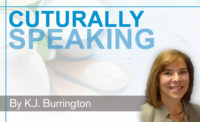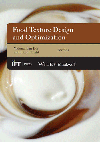Think clean label in cultured dairy
Dairy proteins could help cultured dairy processors be less dependent on hydrocolloids and starches

Clean label is a trend that is here to stay. Some of the more common attributes associated with clean label include minimally processed, sustainable, simple and fewer ingredients, organic, non-GMO and “free from” claims regarding artificial colors and flavors, preservatives and more. Clean-label cultured dairy products are becoming more common, but additional development could be done, and there are other ingredients to consider.
Providing texture and stability
Products such as yogurt, sour cream and cottage cheese have had many product variations over the years focused on fat reduction. These products relied heavily on hydrocolloids such as pectin, locust bean gum, xanthan gum, gelatin and/or modified starches to provide a mouthfeel and texture like their higher-fat counterparts.
Hydrocolloids and starches provide the added benefit of texture stability and allow stable products to be made with the minimum level of milk solids nonfat for yogurt that is 8.25%. But many consumers would not consider these ingredients clean label.
As we look around the cultured dairy products landscape, there are examples of products that use little to no hydrocolloids or starches. Now that milkfat has better health news, yogurt companies have developed higher-fat options that provide a better mouthfeel and flavor while being less dependent on these added ingredients.
Another of those products is Greek-style yogurt. The one thing most of these yogurts have in common is more dairy protein. Many of them are strained or filtered to remove water, lactose and minerals (acid whey), which concentrates the protein in the yogurt from 3.5% up to 10% protein. The added protein provides a strong, stable texture and a thicker mouthfeel.
Another way to increase protein is by adding a clean-label dairy protein such as milk protein or whey protein to achieve up to 10% protein. One advantage of this versus straining is there is no production of acid whey. Another advantage is being able to customize the texture based on the type of dairy protein chosen. A milk protein concentrate or isolate will produce a yogurt with a very thick, firm texture, while a whey protein concentrate or isolate will produce a yogurt that is much softer and smoother.
Even if your target is not a high-protein yogurt, adding 1-2% of a milk or whey protein will provide more structure and stability to a spoonable or drinkable yogurt and reduce your dependence on added hydrocolloids and starches.
Reducing sugar
Though you will find drinkable and spoonable yogurts with up to 16% sugar and 10% added sugar, some yogurt producers are trying to reduce the added sugar. The availability of improved natural high-potency sweeteners such as stevia leaf extract and monk fruit extract, along with bulk sweeteners such as erythritol and allulose, make this task a little easier with more of a clean-label approach. Many of these sweeteners are incorporated into the flavor or fruit preparation that is added to the white mass or yogurt base.
One way to add sweetness to the white mass is to hydrolyze the naturally occurring lactose in the yogurt mix. Milk has about 4.7% lactose, but a yogurt mix with added milk powder may have 6-7% lactose. Adding lactase along with the cultures will allow the lactose to be hydrolyzed into the monosaccharides glucose and galactose during the four-to-six-hour fermentation time. These monosaccharides will contribute more sweetness without adding sugar and allow you to make a lactose-free claim.
If you want to further enhance the sweetening power, then you could add milk permeate to the yogurt mix and then add lactase. Permeate contains about 85% lactose and virtually no protein. This approach works especially well for drinkable products.
These are just a few examples of how to develop clean-label cultured dairy products. I encourage you to give them a try!
Looking for a reprint of this article?
From high-res PDFs to custom plaques, order your copy today!







